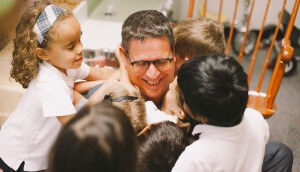November 3, 2016
I was very impressed with the turnout at our  recent cultural celebration of Diwali last week. It was great visiting with so many of you and seeing the joy in the eyes of our students as they sampled the food, traditions, and activities of the Indian culture. More heartwarming was the pride our Indian-American students took in sharing their culture with others. It is a testimony to the diversity and multiculturalism of the MPA community. I am grateful for the work of our Parents Association and volunteers to make the celebration so meaningful.
recent cultural celebration of Diwali last week. It was great visiting with so many of you and seeing the joy in the eyes of our students as they sampled the food, traditions, and activities of the Indian culture. More heartwarming was the pride our Indian-American students took in sharing their culture with others. It is a testimony to the diversity and multiculturalism of the MPA community. I am grateful for the work of our Parents Association and volunteers to make the celebration so meaningful.
The Diwali Mela is one expression of our school’s commitment to building an environment and community that truly values equity, justice, multiculturalism, and inclusion. Dr. Yong Zhao, internationally known futurist, writes of the “death of distance.” He proposes that we live in a world that is no longer bounded by the last street of our neighborhood. We can move physically from one country to another in less than a day. Intellectually, we can move within seconds. Our neighborhood is global. As we work to provide students with a global perspective, we must begin with developing their cultural competency.
Cultural competency is recognized as crucial to success in today’s 21st century globalized society. As our global economies become more interdependent, students will be required to work across cultures. Today, one in five jobs in this country is tied to international trade and the trend is expected to continue. Here at home, our American society is becoming rapidly diverse. It will be important for students to know, understand, and appreciate people from other cultures and possess the capacity to acknowledge other points of view about pressing world issues. Awareness and appreciation of cross-cultural differences, and the willingness to accept those differences, opens doors for opportunities to engage in productive and respectful cross-cultural relations.
Key to developing cultural competency is creating an environment and community that truly values equity, justice, multiculturalism, and inclusion. Recently, educators gathered to discuss educational equity. They took part in an informal poll to define what equity in schools looks like. Here are a few of their responses:
- A place where learning is a priority.
- A school to which teachers and students like to come.
- A school that respects diversity of all kinds.
- A school that has high expectations no matter the students’ challenges.
- A school that provides individualized pathways to success for all students.
As I read through their responses, I couldn’t help but think they were describing Mounds Park Academy. While there is always more we can do to build a just and equitable school and community, I feel strongly that MPA is a place where individuality is honored and celebrated. Each day, and in multiple ways throughout the school year, teachers foster an environment built upon empathy, equity, and dialogue. MPA is committed to exposing students to different worlds, helping them see situations from different perspectives, and building empathy through literature, history, music, art, language, theater, service, speakers, and assemblies.
At the risk of being overly simplistic, the work of cultural competency begins and ends with the individual. At MPA, every child is known, understood, and always treated with kindness by peers and teachers alike. Connections are fostered through intentional collaboration at and among grade levels. This results in confidence that only comes from being a valued, contributing member of a community. We work very hard to embrace every child’s differences and offer an individualized journey that reveals who he or she is truly meant to be. In developing confidence in our own uniqueness, we can better appreciate the uniqueness in others.